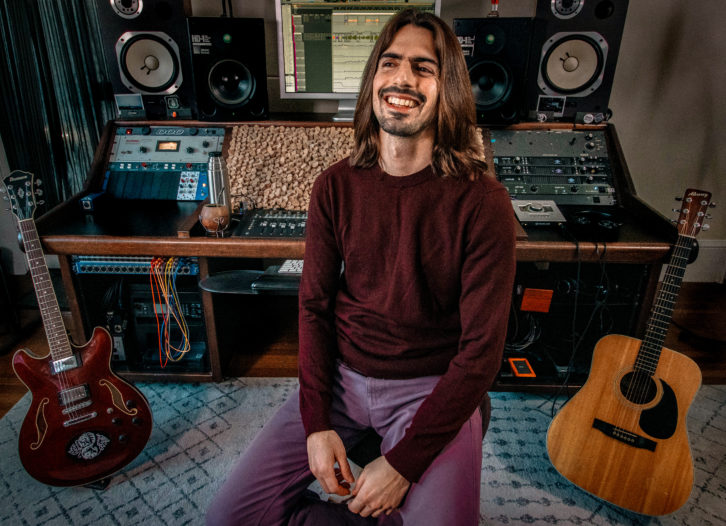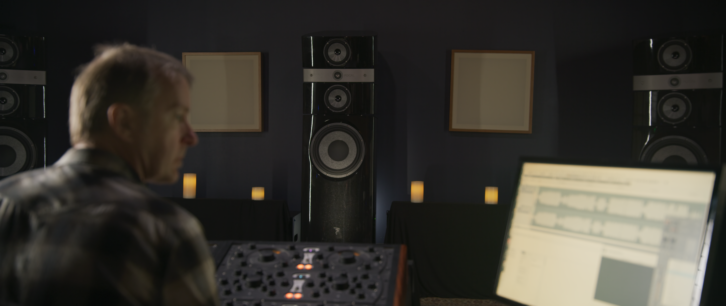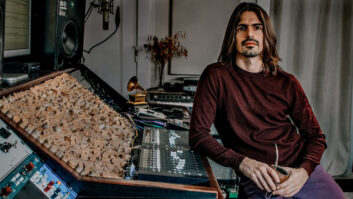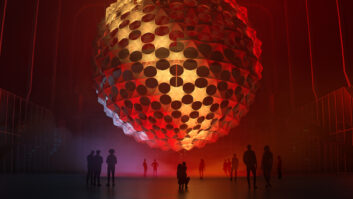
This two-time Grammy-winning artist has proven a brilliant choice for the Dolby Atmos format. Fantastic Negrito’s music naturally comes at you from every angle, as disparate spoken and musical elements give listeners the feeling that parts of a song are in your ear, while others are outside the room, or just outside.
“Immersive music is really all about creating an active listener versus a passive listener,” says mastering engineer Michael Romanowski, who created the Atmos mix and master for Fantastic Negrito’s new album, Have You Lost Your Mind Yet? “You want to have people focused and paying attention. That’s why Fantastic Negrito’s music is ideal. It’s not background music. It keeps people engaged with his creativity. For example, the Hammond comes in with a lick, and suddenly it’s in a different spot, just for a moment, and that makes you take notice.”
Fantastic Negrito (the stage name of artist Xavier Amin Dphrepaulezz) has given his record a title that is as appropriate for our life and times as it is for the practically psychedelic experience of hearing his super-funky music surround you in a room. The original tracks were recorded by Trevor Orriss and Migui Maloles, and the stereo release was mixed by Nahuel Bronzini in Bronzini’s personal studio. Bronzini was also the recording engineer for Fantastic Negrito’s Please Don’t Be Dead album (the 2019 Grammy winner for Best Contemporary Blues Album), and he mixed a couple of those album tracks. For this release, he was mainly the stereo mix engineer.

Photo by Amanda Nuir Mýrdal.
“This is a very electric guitar-heavy album and a sample-based album,” observes Bronzini, who A/Bs his mixes between his Meyer HD-1 monitors and a pair of Grado SR80e headphones. His mixing rig also includes Pro Tools, a Burl Vancouver summing mixer and three UAD Apollo interfaces for a total of 32 outputs.
“Most of the guitars were recorded DI, which is unusual for this type of album, so there was a lot of tone-shaping in the mix,” Bronzini adds. “I used plug-ins from a company called Kush Audio. They make a boutique distortion plug-in called Omega TWK, the ‘Tweaker.’ That was great on the organ and guitars. I can create automations to get more or less coloration at the same time that I get more or less level.”
Bronzini also got creative with Universal Audio’s spring reverb emulations, as well as Soundtoys’ Little AlterBoy on vocals and guitars. “I love how artistic Xavier’s music is, so I really try to shape things in such a way that the elements feel as if they move and breathe,” he says.
Another important part of Bronzini’s mix involved judiciously muting elements to create space for essential parts of the arrangements, whether they be musical elements, effects, or sung or spoken vocals. Not only are Fantastic Negrito’s songs complex musically, they also make strong statements about social and economic justice; it’s critical for the music and the message to come across.
“Xavier and I went back and forth on those things until we felt it was right,” Bronzini says. “I would send him mixes to review and then we would get together for tweaks. He was very involved.”

After arriving at a mutually agreeable stereo mix, Bronzini sent stems to engineer David McNair to master the stereo version, and to Romanowski for the Atmos master. Romanowski also received a multitude of isolated tracks and stems, some dry and some processed, that he could make use of in his mix.
Romanowski began working in surround in 2000 and has been mixing and mastering for immersive audio since 2018. His studio is optimized for immersive audio with a 7.1.4 Focal monitor system and Nuendo workstation, which he says works beautifully with the Dolby Atmos Renderer.
“Bob Hodas tuned this room,” Romanowski says. “The space measures 16 by 21, with 11-foot ceilings. Ceiling height was really crucial. There’s bass trapping above the ceiling, so that actually gives me about 14 feet overhead.
“What never works,” Romanowski says, explaining his approach to Atmos projects, “is upmixing to immersive audio from a stereo mix. I need to have control over individual instruments in order to imagine re-combining them in a 3-D space instead of a two-dimensional plane.
“Immersive audio is not about establishing a precious center spot to sit and listen between two speakers,” he continues. “It’s about the listening experience as you move around the room. How does it pull the listener in? How does it change, depending on how close you are in proximity to one speaker or another?
“What you want is a really cool, evolving mix, and for that you need to have a variety of elements to work with, to create movement as well as balance. For example, the song ‘I’m So Happy I Cry’ probably has 75 or 80 stems that I’m combining or manipulating in some way.”
“I’m So Happy I Cry” is certainly representative of the possibilities for musical movement on Have You Lost Your Mind Yet? The song shifts tempo more than once, and features reverberant handclaps and stomps, effects, lead vocals, rap vocals, choral vocals and programmed drums, as well as Hammond organ and electric guitar.
“On first listen, what I thought was cool about Fantastic Negrito’s stuff was that there were percussion pieces and background vocals and little sounds or parts that I could spread out and move around,” Romanowski says. “You end up with this mix that’s different depending on where you are in the room, but it’s not gimmicky in the way some styles of music might lend themselves to.
“For some bands, or some songs, doing something gimmicky or weird and out there fits,” he continues. “For example, there’s a surround version of Primus doing twisted versions of Willy Wonka and the Chocolate Factory songs. It’s totally bizarre, but if it weren’t, it wouldn’t be Primus. Or a band like the Flaming Lips will do something wild like anchor the vocals in the center but make the drums swirl around over your head. They’re very unconventional in their techniques to begin with, and they might use the format to take the listener out of a conventional paradigm. Again, that works because it’s the Flaming Lips.
“Atmos music has shifted in the last couple of years from the way people approached immersive audio that was tied to video. Now you’re not staring at a screen and your attention isn’t cut in half. Immersive audio for film can have moments when there’s movement, like a helicopter flying by, and if the image is in front of you but the audio sounds like it’s flying over your head, it doesn’t gel in your brain and there is a disconnect.
“With Atmos music, and especially on this Fantastic Negrito project, you’re working with something that significantly enhances your experience. Negrito doesn’t need to express himself that way because the songs stand up strong enough. There are dozens of elements, but no fly-bys!”







